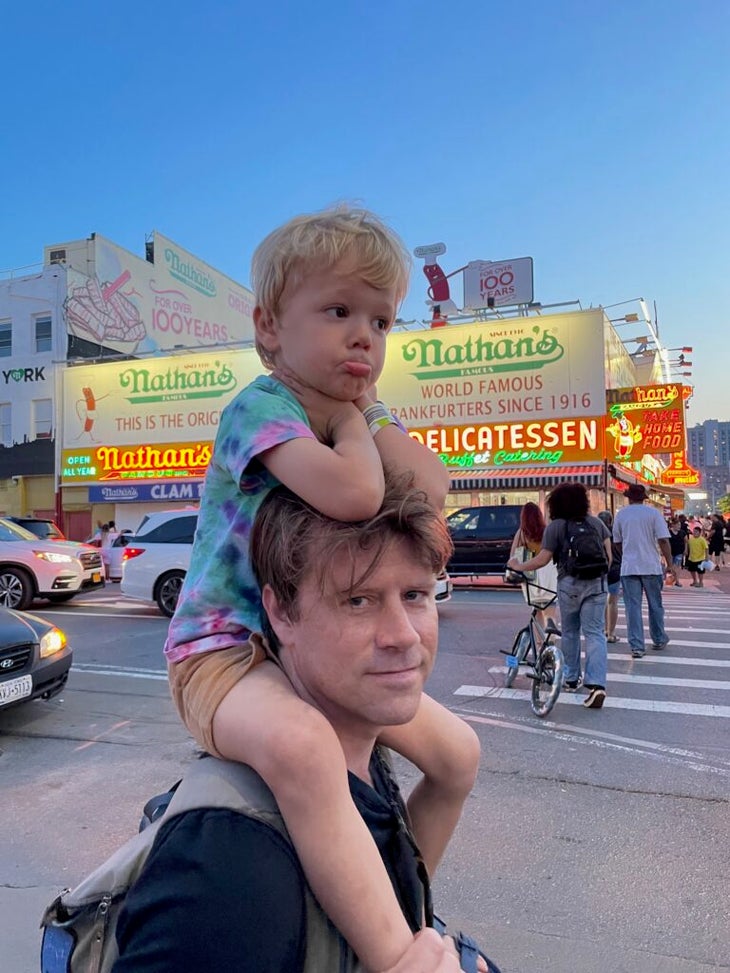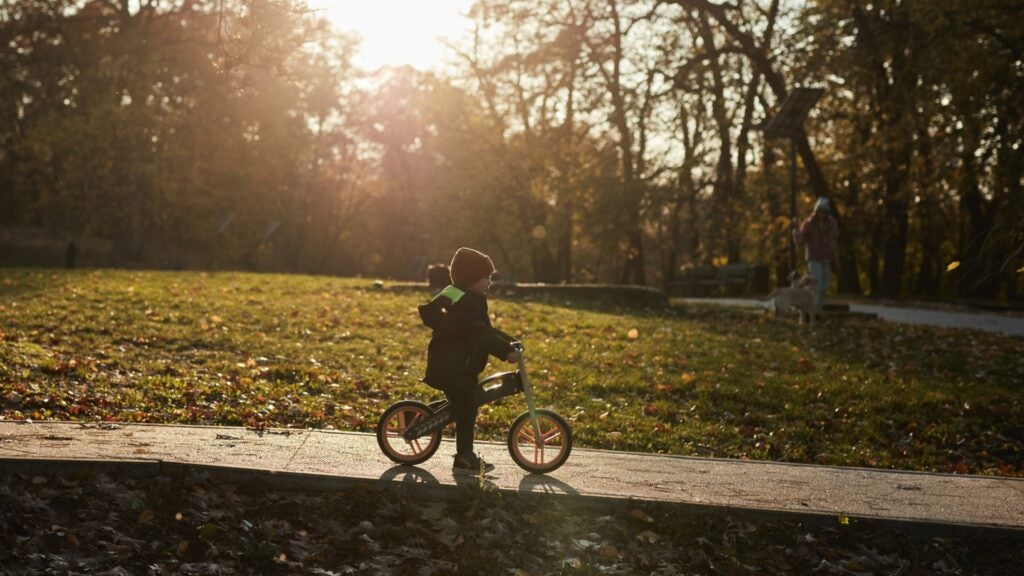No products in the cart.
Outdoor Adventure
Don’t Project Your Mountain Town Envy Onto Your Kids
“The easiest way to turn your kids into geniuses by the time they’re seven is to front load huge amounts of experience, including dangerous experience.” This is the advice of the late John Taylor Gatto, the writer and educator who is perhaps best known for his passionate polemics against compulsory schooling. For Gatto, one of the ominous signs of “well-schooled kids” is that they are easily bored, afraid of being alone with their own thoughts, and in constant need of affirmation from authority. To avoid this outcome, Gatto recommends that parents “challenge their kids with plenty of solitude so that they can learn to enjoy their own company, to conduct inner dialogues.” The bit about turning kids into geniuses is less about molding our progeny into mini Mozarts than it is about nurturing a desire for adventure that is inherent in all children. Gatto, again: “After a long life, and 30 years in the public school trenches, I’ve concluded that genius is as common as dirt.” He is fond of an anecdote from Richard Branson: the billionaire founder of the Virgin Group claims that when he was four years old, his mother once kicked him out of the car miles from home and told him to find his own way back.
I’m going to assume that many parents would be a little hesitant to repeat this experiment. Those who want to nudge their children towards being more independent—but want to avoid awkward conversations with the cops about why their four-year-old was rambling around solo on the interstate—might be drawn to the “1000 Hours Outside” initiative. Founded by Ginny Yurich, a Michigan-based writer and homeschooling mother of five, the project, which quotes Gatto in its promo video, is based on the uncontroversial premise that today’s youth spends too much time staring at screens and would benefit from more unstructured outdoor play. After witnessing the miraculous effects of the latter on her own children, Yurich started a blog in 2013 to chronicle her family’s al fresco exploits. The concept eventually evolved into a movement, which challenged families to spend 1,000 hours outside each year—an average of 2.7 hours per day. Yurich has since developed it into a business. There’s an online shop selling branded backpacks, water bottles, and T-shirts. Yurich has published several books and the 1,000 Hours Outside Instagram account has nearly 700,000 followers. You can buy an app for $3.99 to track the time you spend frolicking in the great outdoors, away from the influence of your phone.
I’ll admit that my first reaction to the idea of thousands of people fastidiously logging every moment they spend outside was that the incentive felt kind of silly, if not contradictory. Is it a sign of civilizational progress that we’ve gamified the idea of going for a walk, or having a picnic in the park? But as a parent of two young children in New York City, I also spend a fair amount of time fretting about my kids’ limited exposure to nature and engaging in absurd negotiations to get them out the door. Isn’t that exactly what’s going on here, only scaled up for the general public?
Of course, exposure to nature and time spent outside are not necessarily the same thing. A quick perusal of the 1,000 Hours Outside website implies that the ideal we should be striving for involves forests, lakes, and other such scenes of pastoral bliss—not so much the asphalted glories of the big-city playground. But when I reached out to Yurich and suggested that her movement seemed geared towards families with easy access to nature, she pushed back and insisted that the concept was “location agnostic.” She noted that, while there are always pros and cons to any location when it comes to getting outside, big cities often have the benefit of “walkability.” What’s more, the relative close proximity of friends could be a strong motivator for getting kids out of the house. As for the recreational opportunities in urban spaces, Yurich says that: “The asphalt urban playground is an absolute blast. It includes freedom, fun, challenge, friends, full-spectrum light, breeze, thrill, insects, chirping birds, and so much more.”
There’s certainly room for the unexpected: when my son was three he accidentally pricked his finger on a discarded syringe while playing hide-and-seek in our local park, which resulted in me having a long conversation with a New York University infectious disease specialist about the odds of him having contracted some horrible virus. This was also an experience with a hint of danger, though perhaps not the kind of experience that Yurich and Gatto would have had in mind.
I romanticize my own childhood, which was spent communing with forest spirits in the Urwälder of central Germany and included endless hours of unstructured recreation, back when that was just the default way that people dealt with their kids, rather than a marketable parenting philosophy. For better or worse, I was very comfortable being alone with my own thoughts. It helped that I was an only child with a large backyard and low threshold for self-amusement; I spent hours lobbing crab apples into the air and trying to skewer them with homemade spears—a clear sign of well-adjusted prepubescence.
Since that is my basis for comparison, I can’t help but worry that my city-bound kids (aged one and six) will grow up somehow spiritually bereft, destined to turn into neurotic adults because they didn’t spend quite as much time in their formative years getting stung by bees, or whittling rudimentary ordnance out of sticks. These concerns are compounded by my inevitable awareness of those Edenic towns in other parts of the country where access to the outdoors constitutes a significant part of that intangible thing we call quality of life. (Call it an occupational hazard of working in outdoor media.) I spend more time than I’d like to admit envying what I assume is a vast population of supremely even-tempered children in, say, Telluride, or some hamlet in the Adirondacks that hasn’t yet been ruined by yuppies like me, where robust preschoolers are surely splitting firewood by hand.
All of which is to say that I understand the parental anxieties that have fed the popularity of the 1,000 Hours Outside movement. This enthusiasm, I suspect, comes as much from a generational paranoia about the increasing ubiquity of screens as from a belief in the wholesome effects of nature play. My fellow cohort of young-ish parents and I are the last generation that experienced childhood in the prelapsarian era before smartphones and the internet corrupted everything. (I find myself constantly toggling between thinking that this kind of panic mentality is exaggerated, and thinking that, no, actually, there is something genuinely sinister about the way that my one-year-old daughter covets my phone.)
Thankfully, there’s an easy cure for overindulging in the back-in-my-day mindset: I find it helps to remember that my own father grew up on a farm in post-war Austria. In his own telling, he spent his entire summers outside, sleeping in an alpine cabin and wearing the same disgusting pair of lederhosen every single day while he fished for trout in mountain streams. (Talk about romanticizing your youth.) Compared to him, my own boyhood was impossibly sheltered. And I still like to think that I turned out only moderately deranged.
It’s a useful reminder that we should resist the notion that there’s some kind of hierarchy of outdoor experience, at least when it comes to our kids. But I agree with the general ethos that we should embrace whatever version of nature might be available to us. As Teddy Roosevelt, another famously self-mythologizing outdoorsman allegedly once said: Comparison is the thief of joy.
Over the past several years, my son and I have developed a ritual where we go to Coney Island at least once in early summer. We’ll thrash around in the wild Atlantic before being beckoned by the lights of the boardwalk, the humid energy of a June carnival at dusk. It’s hard to think of any outdoor play venue where your thrills are more predetermined, more structured, than the amusement park, but I’d like to think that that counts, too. Not that I’m keeping score.


